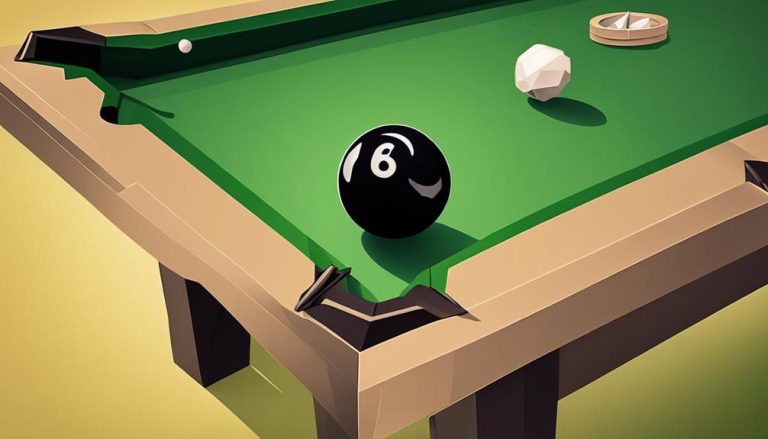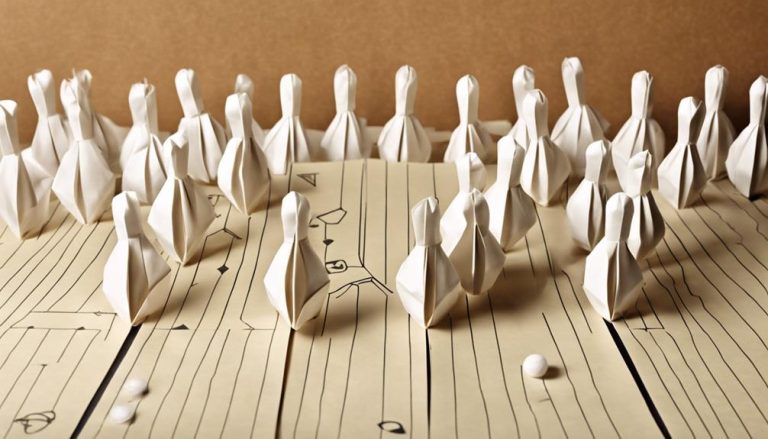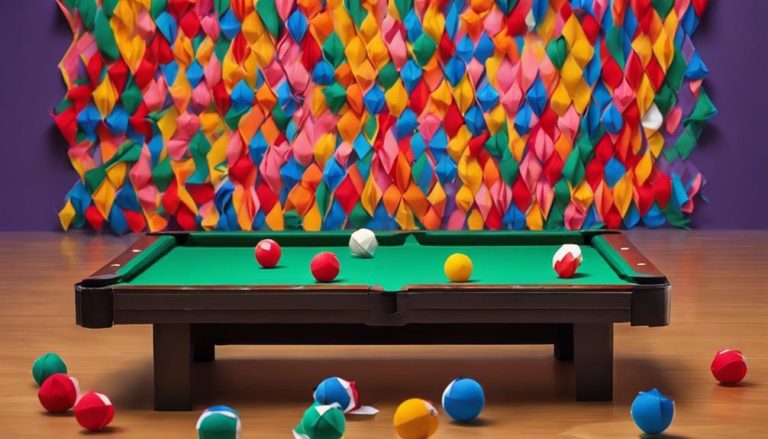General Rules of Wheelchair Tennis
Wheelchair tennis is a competitive and accessible sport for people with physical disabilities. The game is played on a standard tennis court, with some modifications to accommodate the wheelchair players.
This article outlines the general rules of wheelchair tennis, including equipment and set-up, wheelchair regulations, court specifications, scoring and point system, service rules, return of service rules, rules of play, and out-of-bounds rules.
Equipment and Set-up
Wheelchair tennis requires specific equipment and set-up in order to be played properly. A wheelchair that meets the specifications of the International Tennis Federation (ITF) Wheelchair Tennis Regulations must be used when playing wheelchair tennis. The chair should be regularly checked for any signs of wear and tear and must be properly maintained to ensure court safety. It is important to note that the specifications of the chair must not be altered during play.

The court on which wheelchair tennis is played should also adhere to ITF regulations. It should be flat and level with a hard surface that is suitable for wheelchair use. The court should have a clearly marked center line, baseline, and service boxes, as well as a clearly defined wheelchair accessible playing area. The court should also be surrounded by an adequate court wall and safety netting.
When playing wheelchair tennis, it is important to remember that the wheelchair is an extension of the body and can be used for all types of shots, including volleys and serves. The wheelchair should be positioned within the court boundaries and should not be touched or moved during play. When moving between points, the player should move the wheelchair in a forward motion.
Wheelchair tennis is a great way to get active and have fun. With the right equipment and set-up, wheelchair tennis can be a rewarding and enjoyable experience for all players. By following the ITF’s guidelines and regulations, players can ensure that they are playing safely and having a great time.
Wheelchair Regulations
Wheelchair tennis is a sport with specific regulations regarding the design and movement of the wheelchair. As such, there are rules which must be followed by players in order to be in compliance with the regulations.
It is important to understand these rules in order to ensure a fair and safe playing experience.
Chair Design
| The design of wheelchairs used in wheelchair tennis must adhere to certain regulations. | Adaptive Design | Custom Seating |
|---|---|---|
| Wheelchairs must be lightweight and adjustable | Wheelchairs must have adjustable seat heights and backrests | Wheelchairs must be equipped with custom seating systems |
Players must choose wheelchairs that are comfortable, adjustable, and provide the necessary support and stability to perform tennis shots. Wheelchairs must also have adjustable footplates, armrests, and brakes that are easy to operate. It is important that players choose wheelchairs that can fit their specific needs, as well as their playing style. Wheelchairs must also be durable and safe to use on a tennis court.
Movement Rules
Players must adhere to certain wheelchair regulations in order to ensure proper movement during wheelchair tennis matches. Wheelchair navigation is essential to the sport, as players must be able to maneuver around the court quickly and with agility.
The rules are as follows:
- Chairs must have at least two large wheels and two small wheels.
- Chairs must have two brakes.
- Players must be able to navigate the court in a safe and efficient manner.
- Chairs must not have any attachments that can impede the player’s agility.
These rules guarantee a safe, fair, and enjoyable game for all competitors. Players must remain aware of their wheelchair navigation and agility while on the court in order to comply with the rules and regulations.
Court Specifications
How wide should the wheelchair tennis court be? According to the International Tennis Federation, the wheelchair tennis court should be the same size as the traditional tennis court, which is 78 feet long and 36 feet wide.
However, players should be aware that some adaptive strategies may be necessary in order to accommodate accessibility challenges and make the court more accessible. Some of these strategies may include the use of raised court surfaces, which can help provide players a better view of the ball and court. Additionally, some wheelchair tennis courts may have court markings that differ from traditional tennis courts, such as a service line that is shorter and closer to the net.
Wheelchair tennis also has different requirements for the net height than traditional tennis. The net must be lowered to 33 inches in order to accommodate players in wheelchairs. It is also important to note that the net should be made of a material that is strong and durable, as it will be subject to frequent movement from the players. Additionally, the net should be made of a material that is non-abrasive to ensure that it does not cause any discomfort to the players.
The rules and regulations of wheelchair tennis courts should be followed to ensure that all players are able to enjoy the game and follow the rules properly. These court specifications should be taken into account when planning a court for wheelchair tennis. It is important for players to understand the court rules and regulations in order to ensure that they are playing the game safely and fairly. Additionally, it is important for players to be aware of any adaptive strategies that may need to be implemented to make the court more accessible.
Scoring and Point System
In wheelchair tennis, scoring and point system is determined by the International Tennis Federation (ITF). Wheelchair tennis follows the same point system and scoring as regular tennis, with a few exceptions. The scoring mechanics and point values are as follows:
- A point is scored when a player wins a rally.
- Matches are typically played best two out of three sets, and the first two sets are won by the first player to reach six games with a minimum two game margin.
- The final set is the tiebreaker and is won by the first player to reach 7 points with a minimum two-point margin.
- A tiebreaker is used if the set is 6-6.
Wheelchair tennis players are allowed two bounces of the ball before returning it. This allows players to use their wheelchairs to move and keep up with the ball. Wheelchair tennis also has a “let” rule, which means that if a shot is too close to the net to judge, the point is replayed.
Wheelchair tennis is a rapidly growing sport and the ITF continues to update its rules and regulations as the sport grows. Wheelchair tennis is taking the sports world by storm and is quickly becoming one of the most popular sports in the world. It is important for wheelchair tennis players to understand the rules and regulations of the game and the scoring and point system in order to play competitively. With its unique rules and regulations, wheelchair tennis is an exciting and challenging game for players of all ages.
Service Rules
When it comes to service rules in wheelchair tennis, it is important to understand the regulations surrounding wheelchair mobility and court boundaries. Players must be aware of clear boundaries, and abide by the rules of a valid service.
Additionally, players must have complete control over their wheelchair when executing a service.
Wheelchair Mobility
Although wheelchair players are restricted in their mobility, they still must abide by the specific service rules of wheelchair tennis. Wheelchair modifications are essential for allowing players to move around the court, and technique practice is necessary for them to master the correct mobility and positioning.
Here are 4 primary rules to remember regarding wheelchair mobility in tennis:
- Players must remain seated in their wheelchairs during the service motion.
- The ball must be served from behind the baseline.
- After the serve, players are allowed to move their wheelchairs to position themselves for the return.
- Wheelchair players are allowed two bounces of the ball before volleying or hitting it.
Adherence to these rules is essential for any wheelchair tennis player, as it allows them to compete fairly within the sport. With practice and an understanding of these mobility rules, wheelchair tennis players can enjoy the sport to the fullest.
Court Boundaries
Notably, court boundaries must be strictly adhered to during a wheelchair tennis match. The court size for wheelchair tennis must generally be the same as a regular tennis court. However, the wheelchair design can affect the size of the court. For instance, in some cases, a wheelchair tennis court may be slightly smaller due to the wheelchairs’ added width.
Furthermore, the service rules for wheelchair tennis are also the same as regular tennis, with the exception that players must remain within the wheelchair during the service motion. Players must be mindful to remain within the court boundaries and refrain from touching the lines when serving. This is to ensure the fairness of the match and to ensure the safety of the players.
Return of Service Rules
The first rule of return of service in wheelchair tennis is that the ball must be returned after one bounce. This rule applies to any wheelchair tennis match, regardless of the size of the court or the size of the wheelchair. Wheelchair tennis players must be aware of this rule and adhere to it when playing in a wheelchair tennis match.
For return of service in wheelchair tennis, there are four distinct rules:
- Players must return the ball after one bounce.
- The ball must land within the court boundaries.
- The ball must be returned with the same force and speed as it was delivered.
- There is no time limit for returning the ball; the ball must be returned as soon as possible.
Wheelchair size is an important factor when it comes to wheelchair tennis. Wheelchairs must be large enough to allow the player to move freely and comfortably within the court boundaries. Additionally, the court must be accessible to wheelchair users, which means that it must be wide enough and have no obstacles in the way.
Finally, it is important to note that wheelchair tennis players must adhere to the same standards of sportsmanship as any other tennis player. This includes being respectful of opponents and maintaining a positive attitude at all times.
Wheelchair tennis is an exciting and challenging sport that can be enjoyed by people of all ages and abilities. Adhering to the return of service rules is an essential part of playing the game and ensuring that every match is fair and safe for all players.
Rules of Play
Importantly, the rules of play in wheelchair tennis are designed to provide a fair and competitive environment for all players. Players must stay in their wheelchair throughout the match, and can use an assistant to help them with ball placement if needed. The ball must be hit inside the court boundaries and cannot travel at a speed that is too fast for the opponent to return. The player must also be positioned within their wheelchair when hitting the ball, and they must always remain on the court until the ball is returned.
The rules of wheelchair tennis also state that the ball must bounce within the court boundaries before it can be returned. The ball must be returned in a way that allows the opponent to reach it without any disadvantage, and players must take turns in returning the ball. The ball must also be hit within a certain time limit, and if the ball is not returned within the time limit the point will be awarded to the opposing player.
In wheelchair tennis, each player must be aware of their own positioning in relation to their wheelchair. The ball must always be hit in front of the wheelchair and the player must be positioned in the chair in order to hit the ball effectively. Additionally, the court must be divided equally between the two players, allowing both players the same amount of space for their wheelchair.
The rules of wheelchair tennis are designed to ensure that all players are given a fair and competitive environment to play in. Players must use proper technique and keep the ball speed at a suitable level to ensure that both players have an equal chance of returning the ball. Furthermore, players must be aware of the positioning of their wheelchair and must ensure that the ball is hit within the court boundaries. By following these rules, wheelchair tennis can be enjoyed by all players in a fair and competitive environment.
Out-of-Bounds Rules
Notably, out-of-bounds rules must also be followed in wheelchair tennis. This is an important factor to consider when playing, as it can drastically influence the outcome of a game. To be successful, players must use their strategic positioning and mobility skills to stay within the boundaries of the court.
The following are the four main out-of-bounds rules for wheelchair tennis:
- The ball must be hit within the boundaries of the court.
- The wheelchair must remain inside the court during the point.
- The player’s feet must remain inside the court during the point.
- The player must not touch the net or the other side of the court during the point.
It is important to note that any violation of these rules will result in a point for the opponent. Players must be aware of the court lines and the boundaries of the court to ensure they are not at risk of losing the point. Additionally, the rules of wheelchair tennis dictate that any ball that touches the wheelchair or the player’s feet is considered out-of-bounds.
Players should also take into account their mobility skills when positioning themselves in the court. This is especially important when playing on a smaller court, as mobility can be a challenge. By strategically positioning themselves in the court, players can increase their chances of staying within the boundaries and winning the point.
Frequently Asked Questions
What Type of Wheelchair Is Best for Wheelchair Tennis?
When playing wheelchair tennis, the type of wheelchair used can significantly impact performance. Strategizing techniques can be improved with the right equipment, such as a lightweight, highly maneuverable chair with adjustable supports. A good wheelchair for tennis should also provide stability and comfort for long matches.
What Is the Best Way to Start Playing Wheelchair Tennis?
To begin playing wheelchair tennis, it is important to select the right equipment and learn adaptive techniques. Properly fitted wheelchairs and racquets can help players maximize their performance and have an enjoyable experience.
How Do You Practice Wheelchair Tennis on Your Own?
Practicing wheelchair tennis on your own involves learning techniques and doing solo drills. Incorporate repetitive exercises to help master strokes, footwork, and mental strategies. Use a wall or ball machine to perfect your technique and accuracy. Add variety and creativity to practice sessions for best results.
Are There Any Age Restrictions for Playing Wheelchair Tennis?
Wheelchair tennis is open to all ages. Selection of the right wheelchair is important for a successful game, and tournament rules may vary depending on the age of the participant.
Is There a Ranking System for Wheelchair Tennis Players?
Yes, wheelchair tennis players are ranked according to their performance in tournaments and other competitions. Equipment requirements and game rules are taken into consideration when assigning rankings.
wheelchair tennis is a sport that requires specific equipment and set-up, court specifications, and scoring and point systems.
Players must also adhere to service, return of service, rules of play and out-of-bounds rules.
Following these guidelines will ensure a fun and enjoyable game for all participants.






